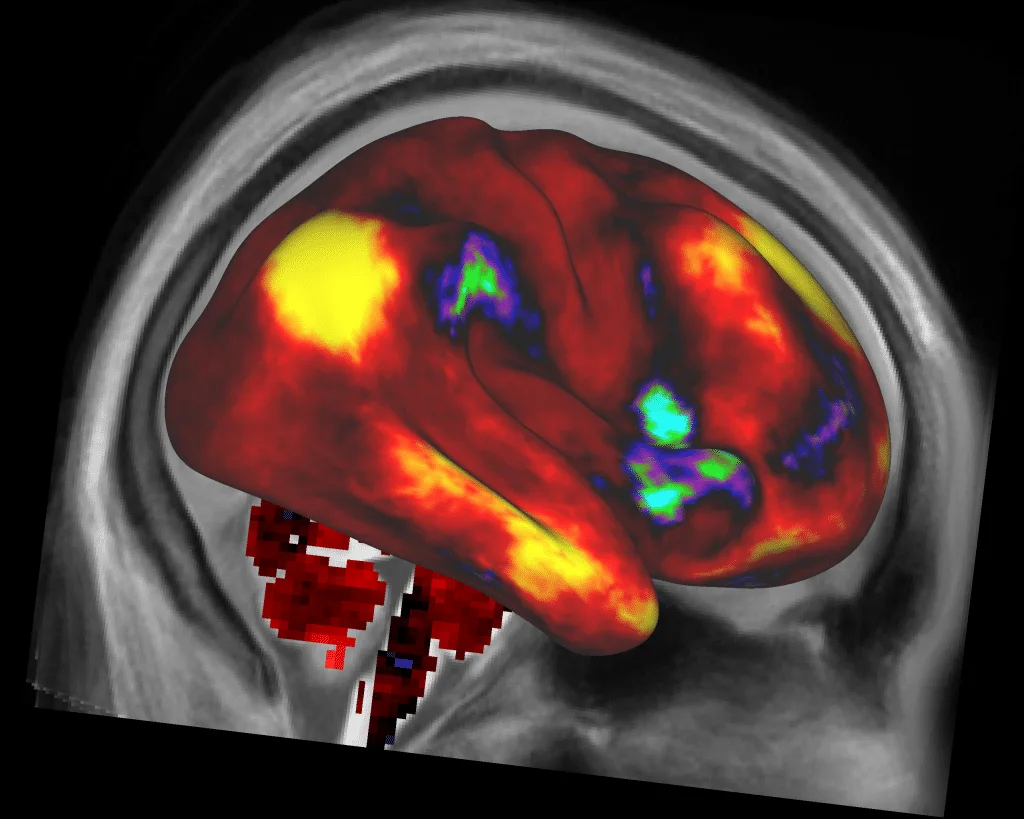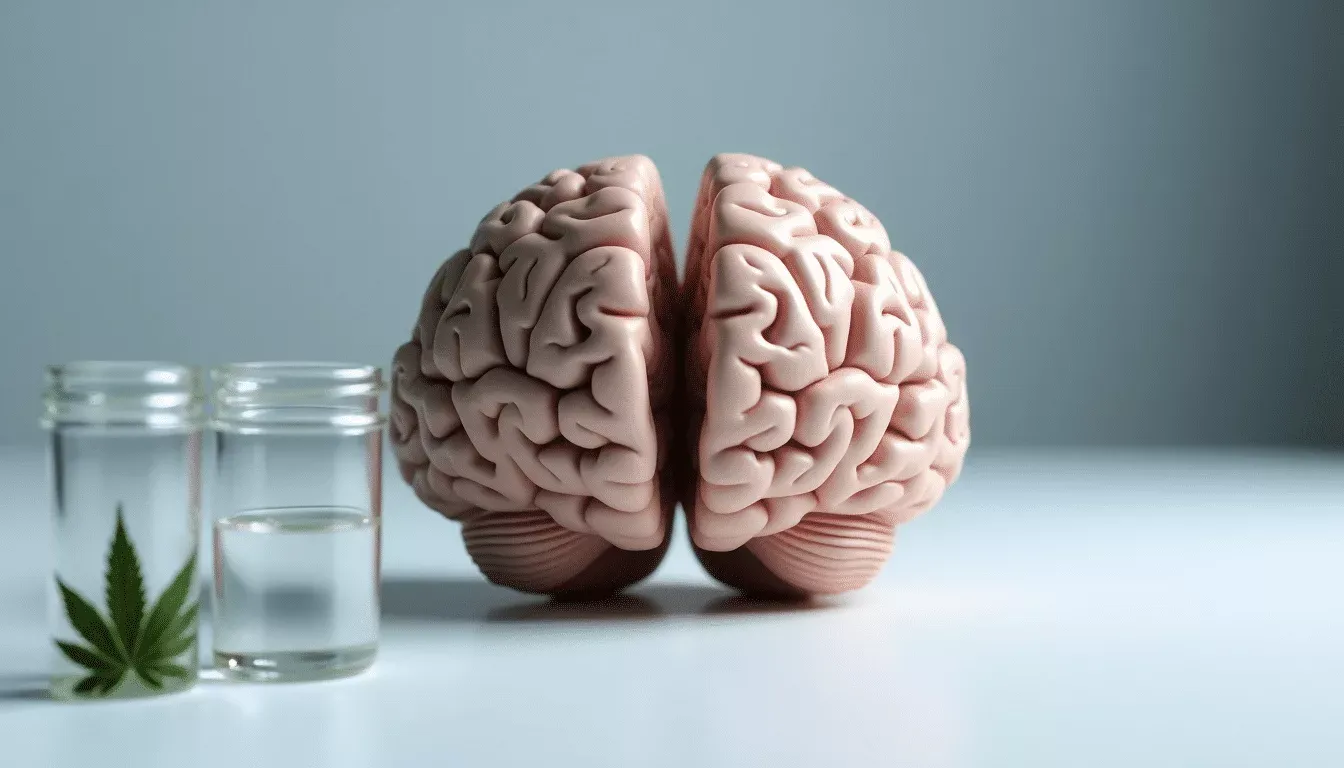Effects of Weed on Brain: What Science Actually Shows
A surprising statistic shows that 63% of regular cannabis users experience reduced brain activity when they perform memory tasks. The effects of weed on the brain raise red flags especially when it comes to young adults, since brain development continues until about age 25.
Cannabis use changes your thinking, attention, memory, and coordination right away. Long-term weed use tells an interesting story. People who start using heavily before turning 16 tend to score lower on cognitive tasks that test memory and judgment. On top of that, research shows 68% of recent cannabis users show less brain activation during cognitive challenges. Your brain’s development faces real risks from weed use, particularly in areas that control decision-making and emotional processing.
Cannabis stands as the most accessible illicit substance globally, with 183 million people using it in 2017. Understanding how cannabinoids affect your brain becomes vital to make smart health choices – both right now and down the road. This piece dives into fresh research findings about how cannabis disrupts your memory and cognitive abilities.
How Weed Affects Brain Function in the Short Term
Cannabis affects your brain function within minutes after you use it and these effects can last several hours. Your brain goes through multiple cognitive changes at once through specific biological processes. Let’s look at how weed affects your brain in the short term and what these changes mean for your daily life.
THC interaction with CB1 receptors in the prefrontal cortex
The main psychoactive component in cannabis, THC, works by binding to cannabinoid 1 (CB1) receptors found throughout your brain. These receptors are especially common in the prefrontal cortex (PFC), which controls higher-order cognitive processes. THC binds to these receptors faster and disrupts your brain’s natural endocannabinoid system balance.
Your body’s natural endocannabinoids work with precision, but THC activates CB1 receptors everywhere in the brain. So this throws off the fine-tuning of synaptic activity and weakens the connections between neural networks. THC affects multiple neurotransmitter systems at once by changing how your brain releases vital chemicals like glutamate, acetylcholine, adenosine, and serotonin.
The prefrontal cortex handles vital tasks like planning, organizing, behavior control, and inhibition. THC flooding this area interferes with these essential processes. THC also activates CB1 receptors on mitochondria, which reduces cellular breathing and ATP supply. This energy disruption makes cognitive problems worse by lowering your brain’s metabolic efficiency.
Working memory disruption during acute cannabis use
Working memory helps you temporarily store and work with information. It’s one of the cognitive functions that cannabis affects most. Research over the last 40 years has consistently showed these effects. A newer study, published by 63% of heavy lifetime cannabis users shows reduced brain activity during working memory tasks.
Your dorsolateral prefrontal cortex plays a vital role in working memory processes. It stores and manipulates information needed for cognitive tasks. Brain scans show that THC intoxication substantially weakens connectivity in the prefrontal cortex. People who feel more intoxicated show more severe effects.
Cannabis users who take higher doses of THC (3.9%) need more time to finish working memory tasks. The more THC you take, the worse your working memory becomes. Brain imaging studies have found less activity in specific brain regions during memory tasks, including the anterior insula and medial prefrontal cortex.
Changes in attention and reaction time within 24 hours
Cannabis can substantially change your attention, coordination, and reaction time within 24 hours. These changes can disrupt daily activities that need focus and quick responses. Studies show that cannabis slows reaction time. This effect hits occasional users harder than daily users, who might develop some tolerance.
Cannabis disrupts how you process attention—both divided and sustained attention when focusing on something. After using cannabis, distractions become harder to ignore and concentration becomes more difficult. Research testing light cannabis users 30 minutes after smoking moderate (2.5%) THC cigarettes showed substantial impairment in attention and concentration compared to placebo groups.
Your information processing slows down after cannabis use. Research shows an interesting pattern: heavy users who stopped using had slower processing than control groups, but this normalized after acute intoxication. This unexpected effect suggests complex brain adaptations in regular users.
Cannabis reduces brain wave patterns in both theta and gamma frequency bands. These patterns help coordinate neural activity, so their disruption likely causes cognitive problems. Cannabis also reduces the strength of event-related potentials during auditory attention tasks that indicates compromised context updating and attention resource allocation.
These effects usually go away as THC leaves your system. However, they can significantly affect your performance in tasks that need precise thinking and quick reactions during the high.
Long Term Effects of Weed on the Brain’s Memory Systems
Cannabis doesn’t just affect your brain right away. Your brain’s memory systems change permanently with regular use. These changes can last even after you stop using it. This raises questions about the long term effects of weed on the brain.
Reduced hippocampal volume in chronic users
The hippocampus serves as your brain’s memory center and shows clear signs of damage from long-term cannabis exposure. Brain scans show that people who use cannabis regularly have smaller hippocampi than those who don’t. The more cannabis someone uses, the more their hippocampus shrinks.
Brain scans reveal that long-term cannabis users have 12% smaller hippocampal volumes than non-users. These changes hit hardest during the teenage years when the brain develops. Even small changes to the hippocampus can lead to memory problems since it helps create and retrieve memories.
Scientists have found a direct link between cannabis use and hippocampal size. People who use cannabis daily for five or more years show the biggest decrease in size. Even using cannabis weekly over long periods can shrink this vital memory structure.
Persistent verbal memory deficits after prolonged use
Cannabis affects your ability to remember words, stories, and conversations more than anything else. A groundbreaking 25-year study found that users forgot one more word on average from a 15-word list for every five years of regular use. This memory loss stayed consistent even after accounting for education and alcohol use.
Regular cannabis users score 2-3 points lower on verbal memory tests than non-users. These lower scores remain even after 28 days without cannabis. Starting cannabis before age 18 doubles your risk of lasting verbal memory issues compared to starting later.
What does weed do to your brain varies across different memory systems. Verbal memory suffers more than visual or working memory in most research. These verbal memory problems can affect your grades, work performance, and daily life.
Impact on encoding and recall functions
Cannabis disrupts memory processes differently. Learning new information becomes harder than remembering old facts. Users make 70% more mistakes than non-users when trying to learn something new. Poor learning leads to poor recall later.
Brain scans show different patterns between users and non-users during memory tasks. Non-users’ brains light up in memory areas while learning. Cannabis users’ brains show less activity in these regions and must use other brain areas to compensate. Their brains work harder to complete the same memory tasks.
The effects of weed on brain development depend largely on when someone starts using it. Teen users show 25% more memory problems than people who start as adults with similar usage patterns. The developing brain remains more vulnerable to outside influences during key growth periods.
Memory can improve after quitting, but recovery takes time. Most people see better cognitive function after four weeks without cannabis. Full recovery might take months or years based on usage history. Heavy users who start young might face permanent memory issues. This shows why both usage patterns and timing matter when looking at how weed affects the brain’s memory systems.
Functional Brain Imaging Findings in Cannabis Users
Brain imaging techniques show how cannabis changes your brain activity patterns. New studies reveal substantial differences in neural activation between cannabis users and non-users as they perform similar cognitive tasks. These brain changes explain why heavy cannabis use affects memory and cognitive function.
fMRI evidence of reduced activation in dorsolateral prefrontal cortex
Brain imaging studies consistently show that cannabis users have decreased activation in the dorsolateral prefrontal cortex (DLPFC) during cognitive challenges. This brain region plays a critical role in working memory, sustained attention, and higher cognitive functions. Meta-analyzes of functional MRI studies have found that cannabis use leads to decreased activation in both the anterior cingulate cortex and DLPFC. These changes happen mostly in brain networks that support executive functions like cognitive control, error processing, and learning.
The long-term effects of weed on the brain become clear when we look at cannabis users’ brain activation patterns during task switching. Cannabis users show weaker neural responses in the DLPFC when they need to change between different cognitive demands. The level of cannabis consumption relates directly to brain activity strength—more use leads to bigger reductions in activation.
These findings suggest that cannabis disrupts how the DLPFC keeps cognitive information “online” for later encoding and retrieval. This interference with normal brain function explains why cannabis users might struggle with sustained attention and memory tasks, even when they’re not high.
Anterior insula and medial PFC underactivation in working memory tasks
A newer study, published in about the effects of cannabinoids on the brain found that heavy lifetime cannabis use substantially related to lower brain activation during working memory tasks, with a Cohen’s d value of -0.28. The study showed that 63% of heavy lifetime users and 68% of recent users had reduced brain activity during these cognitive challenges. This reduced activation appeared most strongly in three key brain regions: the anterior insula, medial prefrontal cortex (mPFC), and dorsolateral prefrontal cortex.
The anterior insula helps integrate sensory information with emotional awareness, while the medial prefrontal cortex connects affective and cognitive processing. Research shows cannabis users have much lower mPFC activity during emotional evaluation tasks compared to controls. These lower responses appeared in parts of the anterior cingulate cortex and ventral medial prefrontal cortex while users evaluated both positive and negative stimuli.
What does weed do to your brain over time? Functional brain imaging suggests it might cause lasting neural adaptations. Heavy cannabis users show reduced activation during memory tasks, yet many perform like non-users. This unexpected finding suggests that the cannabis user’s brain reorganizes itself and uses additional brain regions not typically needed for a particular task. This represents a compensatory mechanism to maintain cognitive function despite changed neural efficiency.
Is weed bad for your brain development? The evidence shows concerning patterns, as these changed activation patterns might reflect long-term neural adaptations from chronic THC exposure. These adaptations could include fewer cannabinoid receptors, especially in regions with many CB1 receptors like the DLPFC and anterior insula. The brain might compensate for these changes at first, but this neural inefficiency could build up over time.
Medical vs Recreational Cannabis: Cognitive Outcomes Compared
The way cannabis affects the brain changes by a lot based on why people use it, which creates a surprising contrast between medical and recreational outcomes. New research challenges the idea that cannabis affects everyone the same way by showing big differences in how these distinct groups think and function.
Medical cannabis patients show better executive function
A breakthrough study showed that patients’ executive functioning got better on tests like the Stroop Color Word Test and Trail Making Test after three months of medical cannabis treatment. We noticed these improvements showed up as faster processing without losing accuracy. Brain activation patterns in medical cannabis users became normal after treatment and looked more like healthy people’s patterns than their own pre-treatment results.
Medical cannabis patients use fewer conventional pharmaceuticals. Their opiate use dropped by more than 42% after three months of medical cannabis treatment. A newer study showed even better results – opioid use fell by 47.69% and benzodiazepine use decreased by 46.91% with medical cannabis treatment. People also used fewer antidepressants (down 22.35%) and mood stabilizers (down 28.57%).
The long-term effects of weed on the brain look completely different between medical and recreational use. Here’s why:
- Medical cannabis has different cannabinoid ratios (higher CBD)
- Medical users usually start as adults after critical brain development periods
- Medical products can ease symptoms that hurt thinking ability
- Treatment follows a plan and usually has medical supervision
Older adults who use medical cannabis report fewer unwanted thinking effects than younger recreational users. This likely happens because they use it to heal rather than get high.
Early recreational users show cognitive decline
Young recreational cannabis users’ brains develop differently than medical users’. What does weed do to your brain during recreational use in youth? Research shows that people who start before age 17 have trouble with abstract thinking, speaking fluently, and remembering words compared to non-users and those who start later.
Is weed bad for your brain development? Research strongly suggests young recreational users face bigger risks. People who used cannabis between ages 14-22 but quit by 22 still had thinking problems at age 27. Early exposure leaves lasting marks that stick around long after stopping.
The effects of cannabinoids on the brain change based on several factors. Long-term users’ IQ drops more than expected, and they learn slower in middle age compared to their childhood scores. These users’ IQ drops more and they process information slower than people who used tobacco or alcohol long-term. Brain scans show that early recreational users typically struggle more with working memory and their brain areas for executive function don’t activate properly.
Adults who use cannabis occasionally without dependence show minimal lasting cognitive effects. Research suggests that moderate cannabis use during middle age doesn’t hurt thinking ability. Short-term use (7 years or less) in older adults doesn’t seem to affect cognitive function much.
Materials and Methods: How Brain Function Was Measured

Image Source: Human Connectome Project
Scientists need precise measurements and strict methods to understand the effects of weed on the brain. The latest large-scale studies use advanced brain imaging and standard cognitive tests to calculate how weed affects the brain more accurately than ever before. Let’s get into the sophisticated methods scientists use to measure changes in brain function from cannabis use.
Human Connectome Project fMRI task design
The Human Connectome Project (HCP) forms the foundation of modern research on the effects of cannabinoids on the brain. This groundbreaking project collected data from 1,003-1,121 young adults between ages 22-36 from 2012 to 2015. Scientists made use of functional magnetic resonance imaging (fMRI) with high spatial resolution to capture detailed patterns of brain activation during cognitive tasks.
The research team ran fMRI sessions with standard protocols. Each participant completed seven different cognitive tasks designed to activate specific brain networks. Every imaging session used an EPI sequence with specific technical parameters (Multiband factor = 8, TR/TE = 720 ms/33.1 ms) to maintain data quality. Scientists applied independent component analysis to remove non-neural components from the data if motion or artifacts appeared.
Urine THC screening and usage classification
Scientists needed objective measures of cannabis exposure to assess the long term effects of weed on the brain. They conducted urine toxicology tests on scanning day to detect recent cannabis use through THC metabolites. The research protocol showed THC metabolites could stay detectable for up to two weeks in casual users and longer in chronic users.
The research team classified cannabis involvement using multiple indicators. They grouped participants based on self-reported lifetime use: heavy users (1,000+ uses), moderate users (10-999 uses), or non-users (fewer than 10 uses). The Semi-Structured Assessment for the Genetics of Alcoholism gave variables for lifetime history and diagnosis of cannabis dependence. This multi-dimensional classification helped scientists distinguish between usage patterns while studying what weed does to your brain.
Cognitive task battery: working memory, language, emotion
Participants completed a series of standard cognitive tests during fMRI scanning to get a full picture of is weed bad for your brain. The cognitive test battery looked at seven areas: working memory, reward processing, emotional processing, language skills, motor function, relational assessment, and theory of mind.
Working memory received special attention because cannabis affects it consistently. Scientists included the List Sorting Working Memory Test from the NIH Toolbox and tasks that required information manipulation. They assessed language processing through standard verbal measures and emotional processing by studying participant responses to emotional stimuli.
The research team controlled for factors like age, sex, socioeconomic status, alcohol use, and nicotine dependence before analysis. They used linear mixed-effects regression models to study links between cannabis use and brain activation across different cognitive tasks. This careful approach helped them identify specific brain regions affected by heavy cannabis use with statistical confidence.
Limitations and Recovery Potential After Cannabis Abstinence
Research shows surprising patterns of recovery in people who quit using cannabis. The effects of weed on the brain aren’t permanent. Many cognitive functions can bounce back with abstinence.
Cognitive improvements after 30 days of abstinence
Memory function starts to improve quickly after people stop using cannabis. The brain’s verbal learning and memory recovery happens mostly within the first week of quitting. Young cannabis users who quit their weekly or more frequent use show better learning efficiency and have better chances at academic success. Yet not all brain functions recover at the same pace. Memory gets better, but attention shows no improvement even after a month without cannabis.
Young people who stayed clean for 28 days still showed lasting problems with attention, verbal memory, and working memory. Those who started using cannabis earlier performed worse on cognitive tests even after 30 days without it. This suggests that the long term effects of weed on the brain might depend on when someone started using it and their total lifetime use.
Withdrawal symptoms and their effect on cognition
Withdrawal hits hardest in the first week and often leads to relapse. Not everyone experiences severe withdrawal symptoms when they quit. People with more cannabis-related problems, measured by higher CUDIT-R scores, faced stronger withdrawal symptoms (B = 0.75, p < 0.001). Depression symptoms at the start also predicted worse withdrawal (B = 0.60, p < 0.001).
Cannabis cravings played a big role too. Stronger cravings led to more intense withdrawal (B = 3.41, p = 0.002). These factors together explained 34.8% of the differences in cannabis withdrawal seen after one week.
Lack of data on THC dose and administration route
Studies looking at how does weed affect the brain often miss vital variables. Current research on cognitive recovery lacks enough data about THC doses and how people take it. Studies vary too much to determine the highest safe THC dose before it hurts cognition.
Researchers face other challenges too. Many studies don’t consider how long people stayed clean before joining the study. Different cognitive tests get mixed together, which might hide real differences in recovery patterns. Studies rarely follow participants long enough to answer questions about long-term recovery.
The Future of Cannabis Research and Brain Health
Research shows how cannabis affects your brain, especially your memory. Studies reveal troubling patterns where key brain regions like the prefrontal cortex and hippocampus become less active during memory tasks. These changes lead to measurable problems with verbal memory, working memory, and attention. The effects are more pronounced in people who start using cannabis before age 25. Brain scans show altered activation patterns, smaller hippocampal size, and reduced cognitive performance. This gives us a clear picture of how cannabinoids change brain function.
Your usage patterns play a big role in how severe and long-lasting these cognitive effects become. Young recreational users who start during their teens face much higher risks of lasting impairment than adult users. Medical cannabis users often see better executive function. This likely happens because they use different cannabinoid ratios, follow structured dosing, and get relief from symptoms that affect thinking. Your personal risk depends on your starting age, frequency of use, and reasons for using.
Many users can recover after they stop using cannabis. Short-term memory usually starts getting better within a week of stopping, with big improvements after 30 days. Some thinking problems might last longer, especially for heavy users who started young. Withdrawal symptoms can make thinking worse at first, but these usually go away within weeks. Your recovery timeline depends on how long you used, when you started, and your brain’s unique characteristics.
Scientists keep learning more about cannabis effects through brain imaging and cognitive tests. Future studies need to solve current problems by using standard THC measurements, following long-term recovery patterns, and learning about individual risk factors. Questions still exist, but current evidence suggests being careful – especially for teens and young adults with developing brains. Smart decisions about cannabis use mean weighing these brain effects against any benefits you expect.
FAQs
Cannabis can significantly impair working memory and attention in the short term. Users may experience difficulty temporarily storing and manipulating information, as well as maintaining focus on tasks. These effects are most pronounced within 24 hours of use and are related to THC’s interaction with brain receptors, particularly in the prefrontal cortex.
Q2. Are there long-term effects of cannabis use on the brain?
Yes, long-term cannabis use can lead to persistent changes in brain structure and function. Regular users may experience reduced hippocampal volume and show deficits in verbal memory that can persist even after periods of abstinence. The severity of these effects often correlates with the frequency and duration of use, as well as the age at which use began.
Interestingly, medical cannabis users often show improved cognitive function, particularly in executive tasks. This contrasts with recreational users, especially those who start in adolescence, who tend to show cognitive decline. The difference may be due to factors such as cannabinoid ratios, usage patterns, and the relief of symptoms that themselves impair cognition in medical users.
Many cognitive functions can recover with abstinence from cannabis. Improvements in verbal learning and memory are often seen within the first week of quitting, with significant gains after 30 days. However, some deficits may persist longer, especially for heavy users who started in adolescence. The recovery timeline varies based on individual factors and usage history.
Functional brain imaging studies show that cannabis use particularly affects the dorsolateral prefrontal cortex, anterior insula, and medial prefrontal cortex. These regions are crucial for working memory, attention, and emotional processing. Cannabis users often show reduced activation in these areas during cognitive tasks, which may explain observed deficits in memory and executive function.
Share this content:



